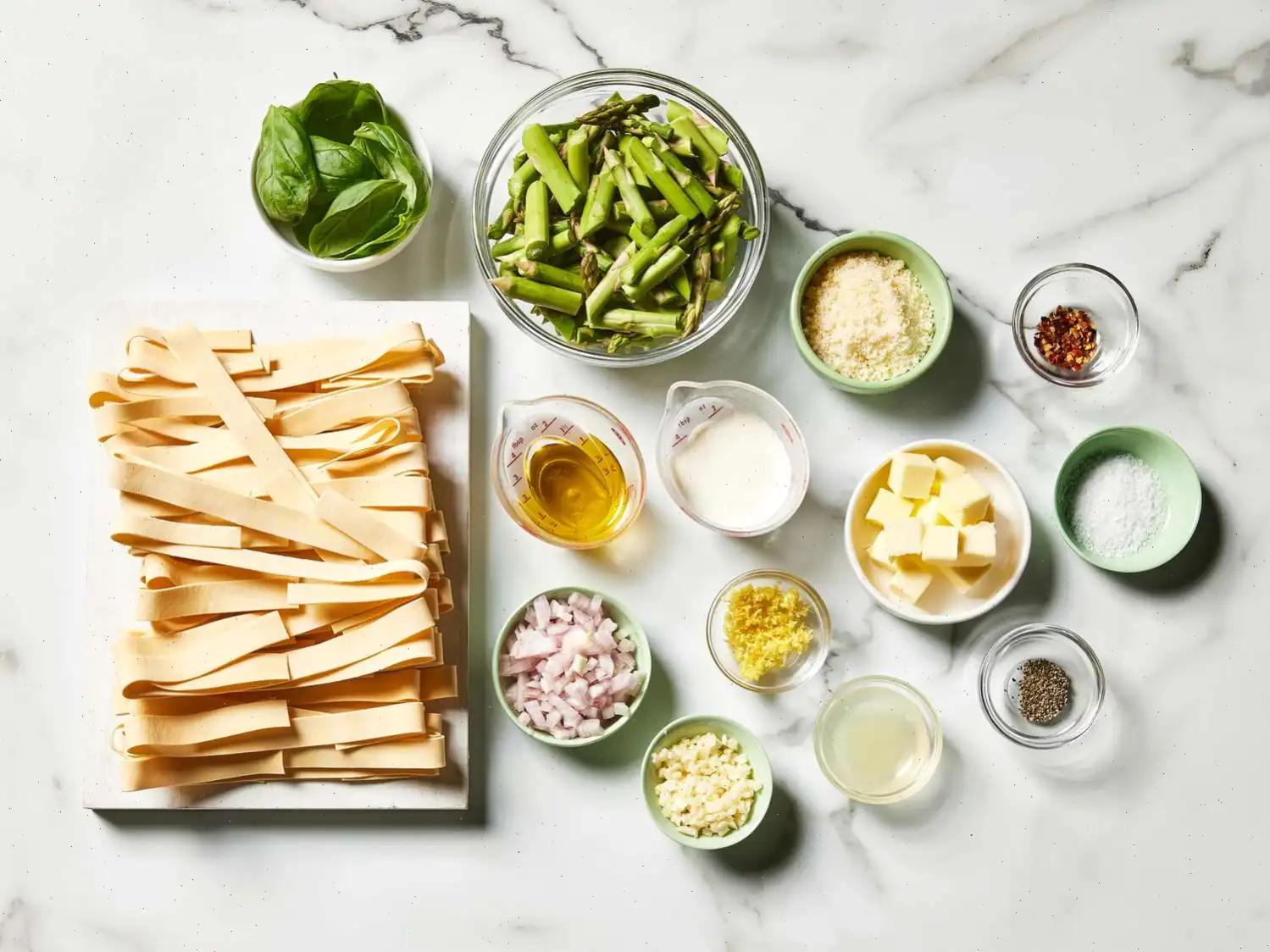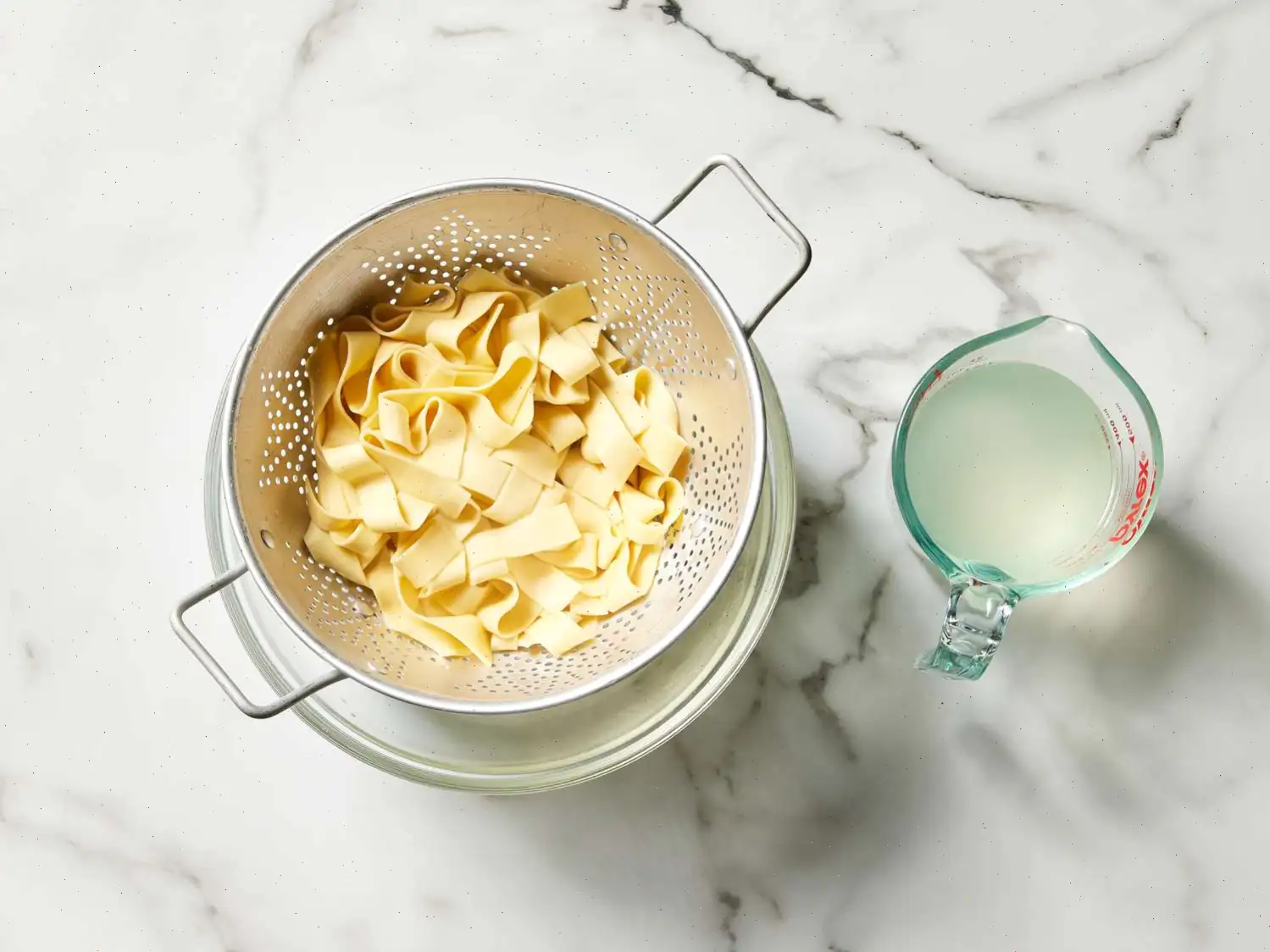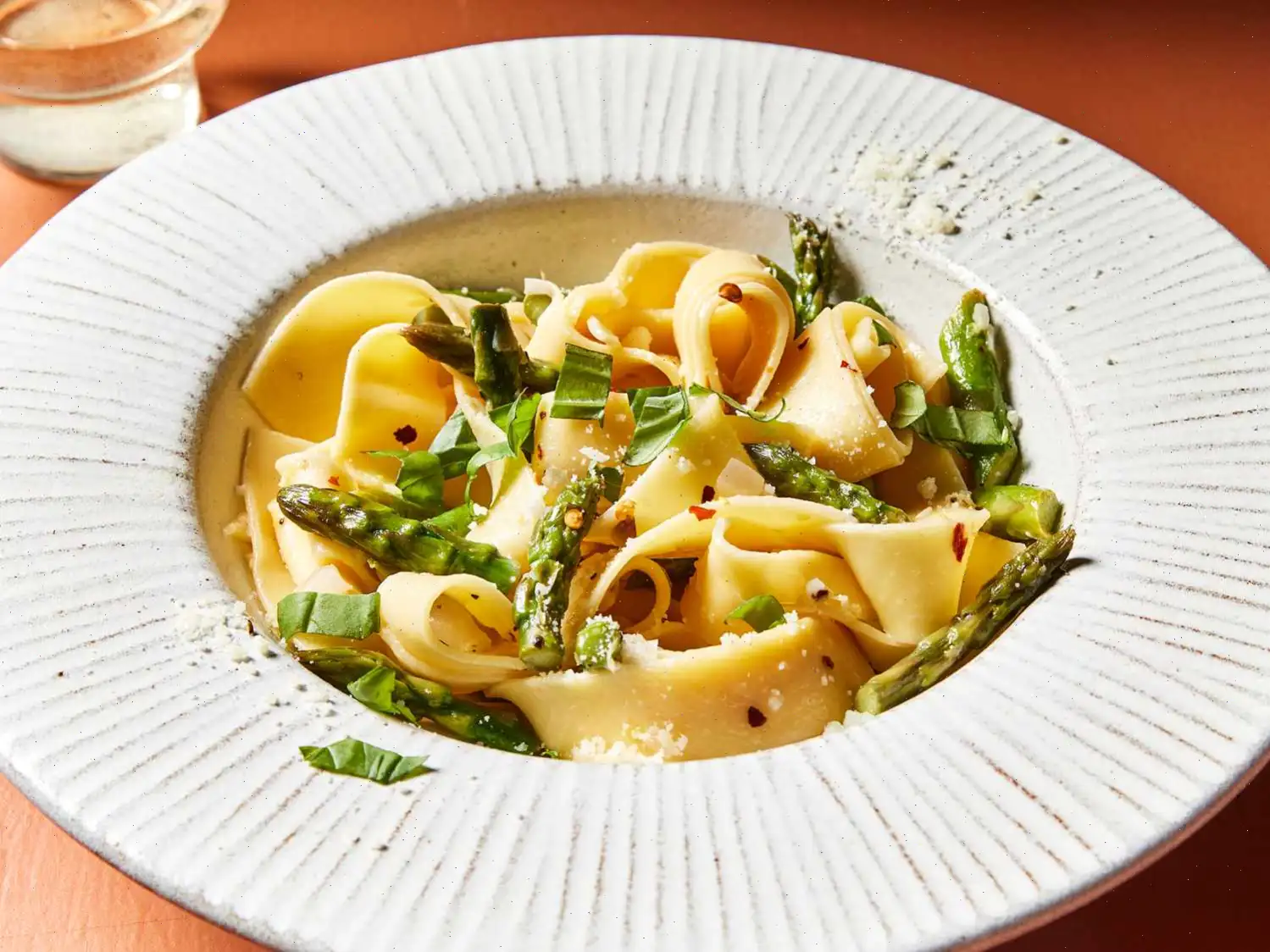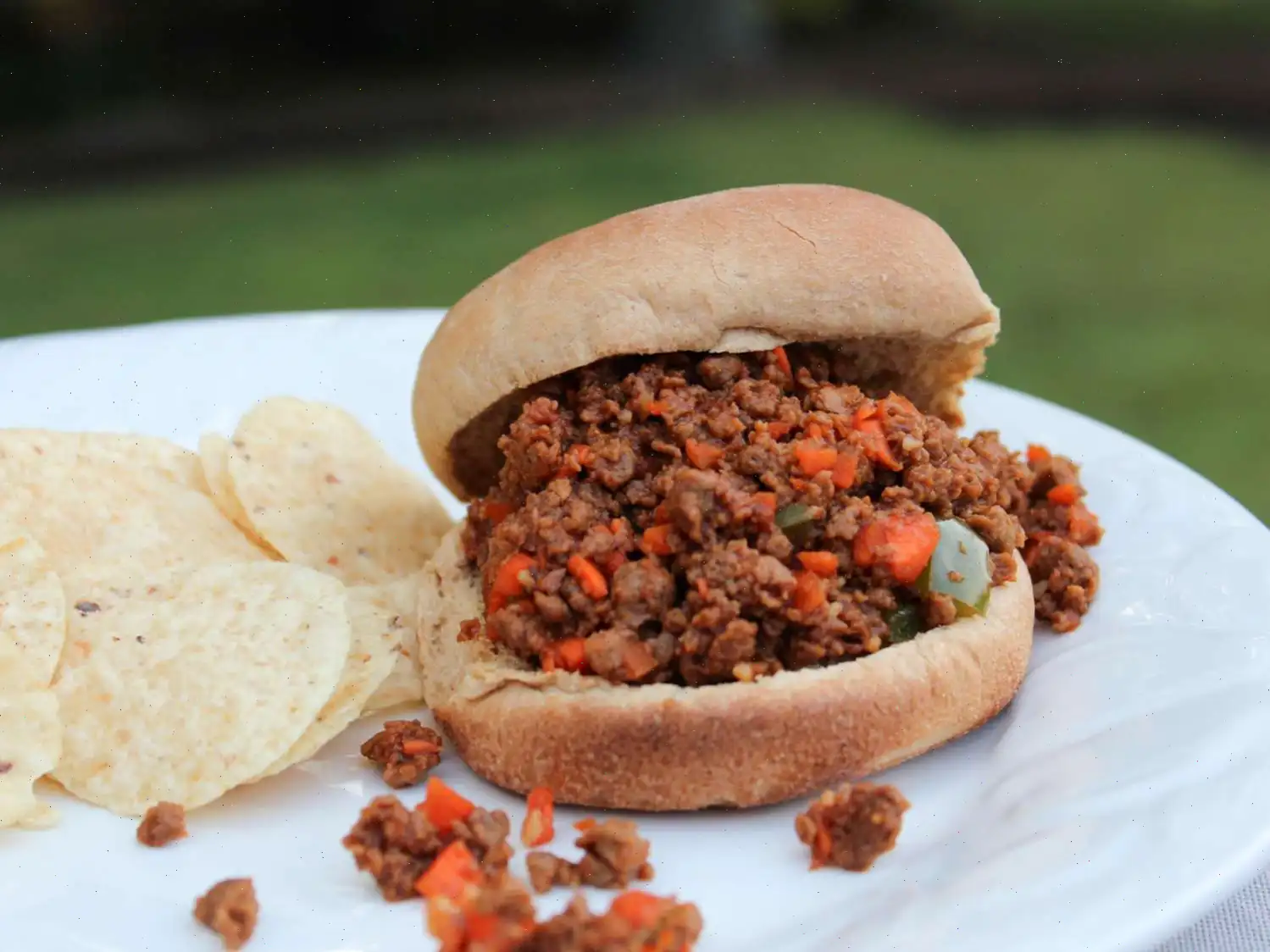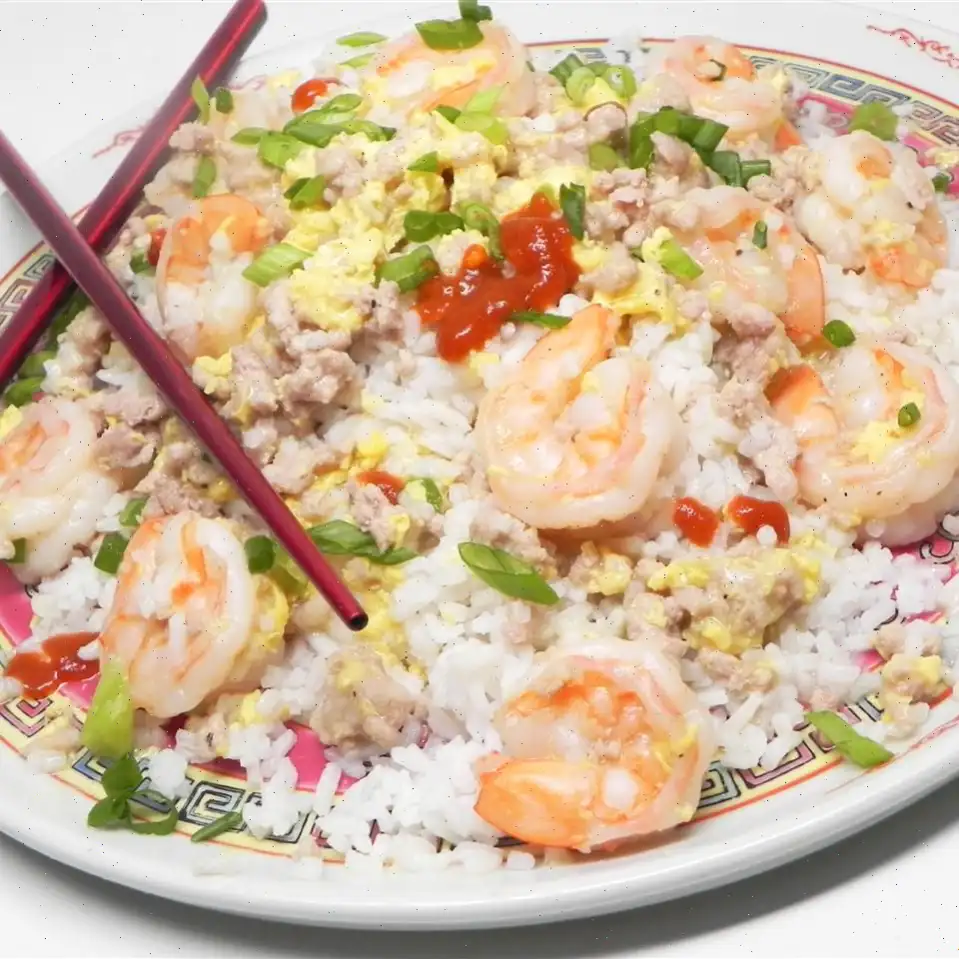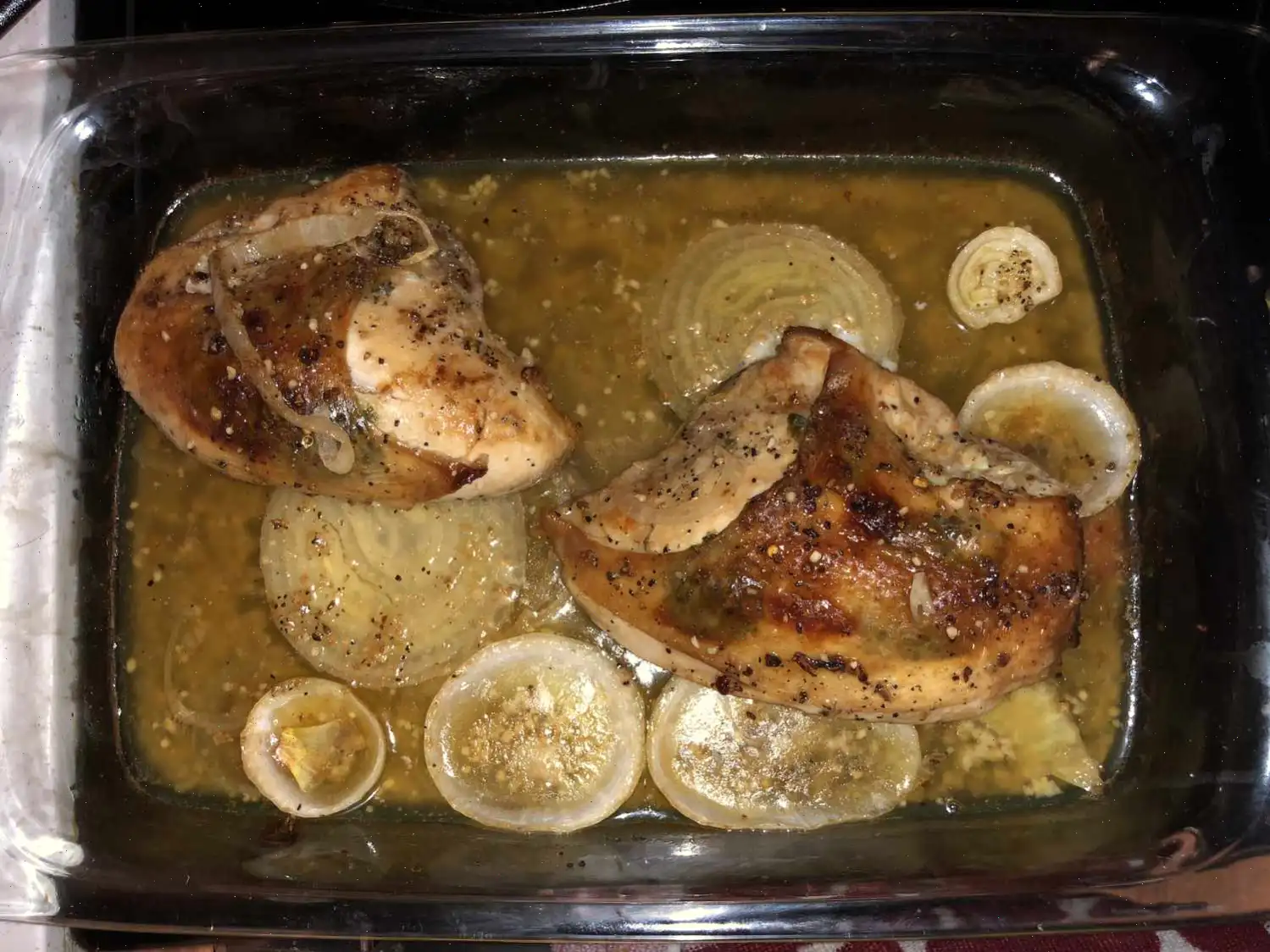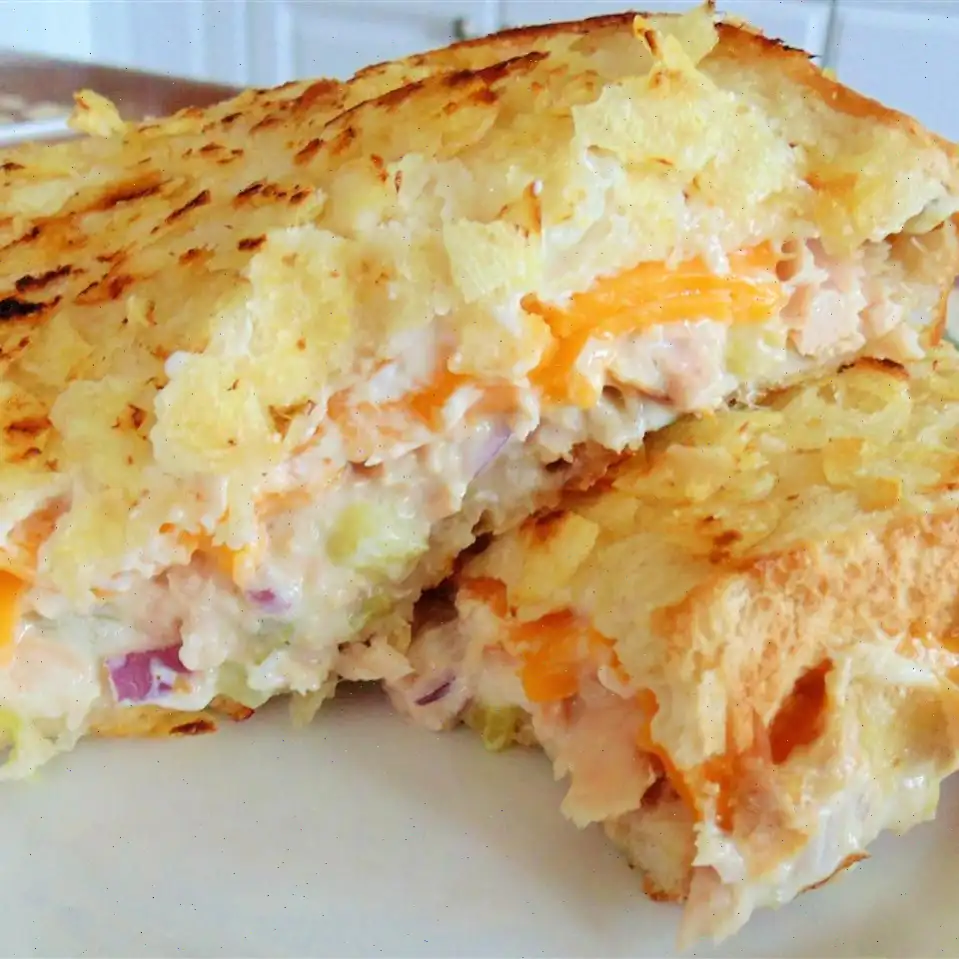
Asparagus Pasta Recipe
Ingredients
- 1 (8.8 oz.) package uncooked pappardelle pasta
- 2 tablespoons olive oil
- 1 shallot, finely chopped
- 3 cloves garlic, finely chopped (about 1 tablespoon)
- 1 pound fresh asparagus, trimmed and cut into 1-inch pieces
- 3 tablespoons unsalted butter, cut into pieces
- 3 tablespoons heavy whipping cream
- 1 tablespoon lemon juice
- 1 teaspoon lemon zest
- 3/4 teaspoon kosher salt
- 1/4 teaspoon freshly ground black pepper
- 1/4 teaspoon crushed red pepper
- 1/4 cup freshly grated Parmesan cheese, plus more for serving
- 2 tablespoons chopped fresh basil
Directions
Step 1: Gather all the ingredients.
Step 2: Bring a large pot of salted water to a boil over high heat. Add the pappardelle and cook until al dente, about 6 minutes. Drain the pasta, reserving 1 1/2 cups of the cooking water. Set aside.
Step 3: Heat the olive oil in a large, deep skillet over medium heat. Add the shallot and garlic, and cook, stirring constantly, until softened, about 2 minutes.
Step 4: Add the asparagus and 1/2 cup of the reserved cooking water. Stir occasionally and cook until the asparagus is bright green and tender, about 4 minutes.
Step 5: Add the butter, heavy cream, lemon zest, lemon juice, salt, black pepper, crushed red pepper, and the remaining 1 cup of cooking water to the skillet. Stir to combine.
Step 6: Add the cooked pasta to the skillet. Stir gently with tongs, sprinkling in the Parmesan cheese, and cook over medium-low heat until the sauce thickens and coats the pasta, about 2 minutes.
Step 7: Divide the pasta evenly among 4 bowls and garnish with fresh basil and additional Parmesan cheese, if desired.
Nutrition Facts (per serving)
| Calories | 431 |
|---|---|
| Total Fat | 23g (29% Daily Value) |
| Saturated Fat | 10g (51% Daily Value) |
| Cholesterol | 87mg (29% Daily Value) |
| Sodium | 381mg (17% Daily Value) |
| Total Carbohydrate | 46g (17% Daily Value) |
| Dietary Fiber | 3g (11% Daily Value) |
| Total Sugars | 4g |
| Protein | 13g (26% Daily Value) |
| Vitamin C | 13mg (14% Daily Value) |
| Calcium | 114mg (9% Daily Value) |
| Iron | 3mg (17% Daily Value) |
| Potassium | 406mg (9% Daily Value) |
Percent Daily Values are based on a 2,000-calorie diet. Your daily values may be higher or lower depending on your calorie needs.
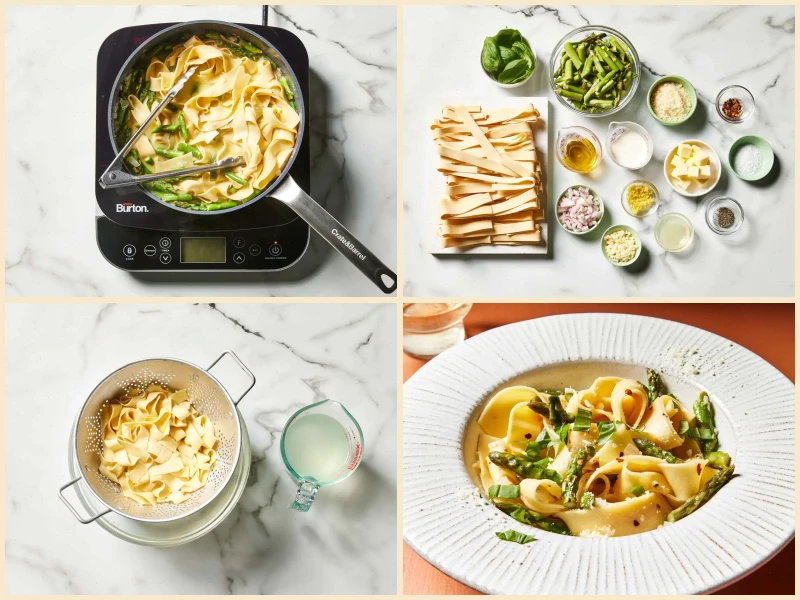

Asparagus pasta is a delightful dish that blends the earthy flavors of fresh asparagus with the creamy richness of pasta. It's an easy-to-make recipe that perfectly combines the health benefits of vegetables with the comforting essence of pasta. Here, we explore the history, regional variations, and unique aspects of this dish.
History of Asparagus Pasta
Asparagus has been a sought-after vegetable since ancient times, with its origins tracing back to the Mediterranean region. It was prized by the Egyptians, Greeks, and Romans not only for its culinary value but also for its medicinal properties. Over time, asparagus made its way into European and American cuisines, often featured in springtime dishes. The idea of combining asparagus with pasta likely emerged in Italy, where vegetables were often paired with pasta to create light and flavorful dishes. Today, asparagus pasta is a popular dish across the globe, particularly in spring when asparagus is in season.
Regional Variations
Asparagus pasta has many regional variations, especially in Italy, where pasta dishes often reflect local ingredients and cooking styles. In Northern Italy, dishes featuring asparagus tend to be richer, incorporating butter, cream, and sometimes cheese, as seen in this recipe. Meanwhile, in Southern Italy, a lighter, more Mediterranean approach might involve olive oil, garlic, and fresh herbs. Some regions even incorporate seafood, such as shrimp or clams, to elevate the dish. Each variation offers a different twist on the classic combination of pasta and asparagus, showcasing the versatility of both ingredients.
How It Differs from Similar Dishes
While many pasta dishes feature vegetables, what sets asparagus pasta apart is the unique texture and flavor of asparagus. Unlike other vegetables, asparagus maintains a firm texture when cooked, providing a satisfying crunch that contrasts with the softness of pasta. The asparagus also has a distinctive, slightly bitter flavor that complements the richness of the creamy sauce. This makes it a lighter alternative to heavier pasta dishes like fettuccine Alfredo or carbonara. Additionally, the use of lemon zest and fresh herbs like basil adds a freshness that distinguishes it from other creamy pasta recipes.
Where Asparagus Pasta is Served
Asparagus pasta is a versatile dish that can be served in a variety of settings. It is often seen in family dinners, casual gatherings, and even in fine dining restaurants. Due to its fresh and light nature, it is particularly popular during spring months when asparagus is in season. In Italy, you might find it served as a first course or as part of a larger meal, while in other parts of the world, its commonly enjoyed as a quick weeknight dinner. It's also an excellent dish for a vegetarian meal or for anyone seeking a balance of vegetables and pasta.
Fun Facts About Asparagus
- Asparagus is one of the oldest cultivated vegetables, dating back to ancient Egypt and Greece.
- Asparagus is known for its health benefits, being rich in vitamins A, C, E, and K, and a great source of folate.
- The green variety of asparagus is the most common, but there are also white and purple varieties, each with its own distinct flavor and texture.
- Asparagus contains a compound called asparagusic acid, which is responsible for the distinctive odor in urine after consuming the vegetable.
Conclusion
Asparagus pasta is a perfect dish for those who enjoy fresh, seasonal vegetables paired with comforting pasta. Its rich history, regional variations, and unique flavor profile make it a beloved choice in kitchens around the world. Whether you're enjoying it in a casual family meal or a refined dinner party, asparagus pasta is a dish that never fails to impress with its elegance and simplicity.
FAQ about Asparagus Pasta Recipe
Comments
Diane Gomez
12/01/2022 04:54:13 AM
I tried making the recipe as instructed but decided to add shrimp to it. For my next attempt, I plan to decrease the amount of pasta water to just a cup. I also included extra freshly grated Parmesan cheese but avoided thickening the sauce too much. I might consider adding more garlic for additional flavor. The red pepper flakes provided a wonderful spicy kick to the dish.
Dennis Hall
08/09/2022 01:34:59 AM
Amazing! The flavor of this dish was delightful.
Joshua Smith
12/08/2024 12:46:05 AM
Fantastic as it is! Discovered that I was out of fresh Parmesan when finishing the recipe, so I used packaged instead. Next time, I'm certain it will be even better with fresh Parmesan. The family absolutely enjoyed it!



